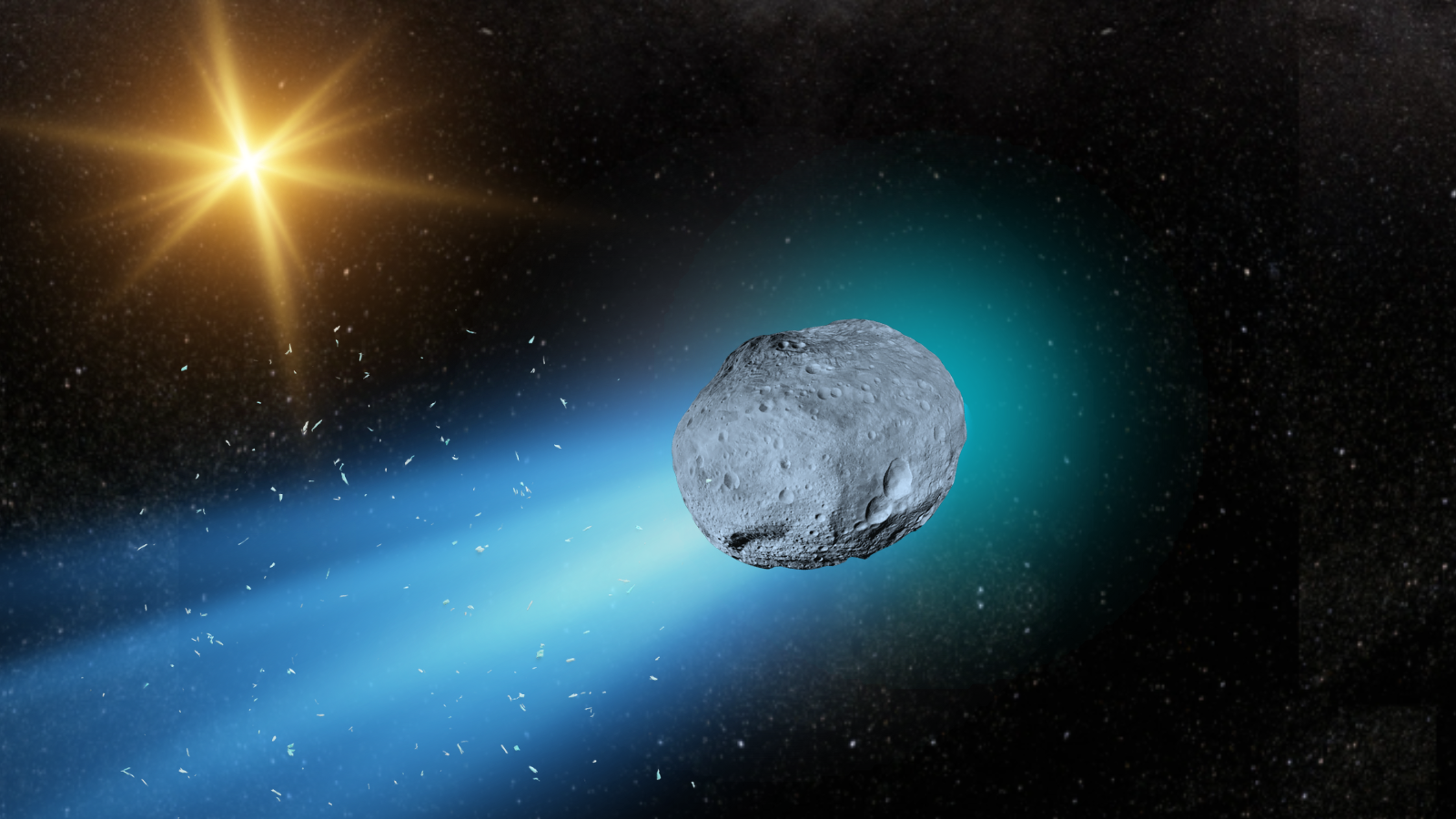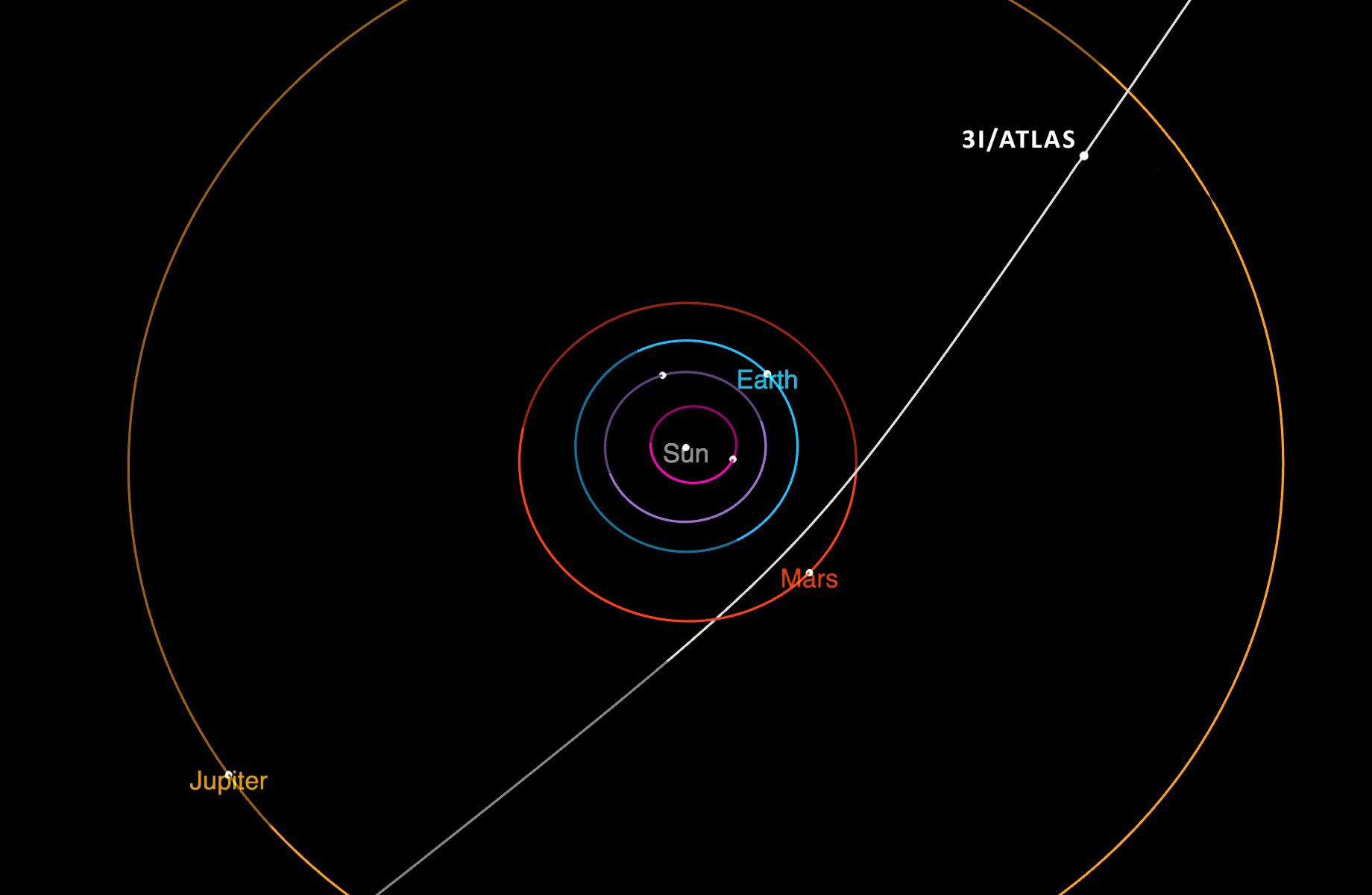Blog - curiosities
3I/ATLAS ON ITS INTERSTELLAR JOURNEY CROSSES THE SOLAR SYSTEM
1. What is 3I/ATLAS?
- It was discovered on July 1, 2025 by the Asteroid Terrestrialimpact Last Alert System (ATLAS) surveillance system in Chile.
- It is the third confirmed object of interstellar origin to have passed through the solar system, after 1I/ʻOumuamua and 2I/Borisov.
- Although some sources speak of an "asteroid", the evidence indicates that it is a comet (activity, gas-and-dust coma) and not a simple asteroid.
2. Physical and observational characteristics
- The estimated size of the core varies: some measurements indicate an upper limit of ~5.6 km in diameter.
- Its initial velocity (when it was discovered) was about 61 km/s (~221,000 km/h) relative to the Sun.
- Its trajectory is hyperbolic, confirming that it is not gravitationally bound to the Sun permanently (i.e., it comes from interstellar space and will continue its journey).

3. Trajectory and planetary approaches
- Perihelion (closest point to the Sun) is estimated for the end of October 2025, at a distance of ~1.4 AU (~210 million km) according to some sources.
- Relevant approaches:
- To Mars: ~0.19 AU on October 3, 2025.
- To Earth: Its minimum estimated distance is ~1.8 AU (~270 million km) on December 19, 2025.
- To Mars: ~0.19 AU on October 3, 2025.
- In short: it will not get close enough to pose any danger to the Earth.

4. Risk to the Earth
- Since its minimum distance as it passes by the Earth is around 1.8 AU, which is much larger than the Earth's orbit (~1 AU), it poses no impact risk.
- Because of its trajectory characteristics, size, and speed, astronomers consider it a scientific opportunity rather than a threat.
5. Scientific significance
- Since it comes from interstellar space, 3I/ATLAS offers the opportunity to study materials that formed outside our solar system: composition, isotopy, dust, ices – which may give clues about other planetary systems.
- Its relatively close passage to several planets and the Sun allows several instruments and space missions to make valuable observations.
6. What we don't know yet
- The exact size of the core is not precisely defined: estimates vary widely.
- Although we know their overall trajectory, minor disturbances, cometary activity, can change fine details.
- Its exact composition, internal structure, precise origin within the Milky Way (which star system ejected it), and how long it has traveled are still being investigated.
 3I/ATLAS ON ITS INTERSTELLAR JOURNEY CROSSES THE SOLAR SYSTEM - by
3I/ATLAS ON ITS INTERSTELLAR JOURNEY CROSSES THE SOLAR SYSTEM - by